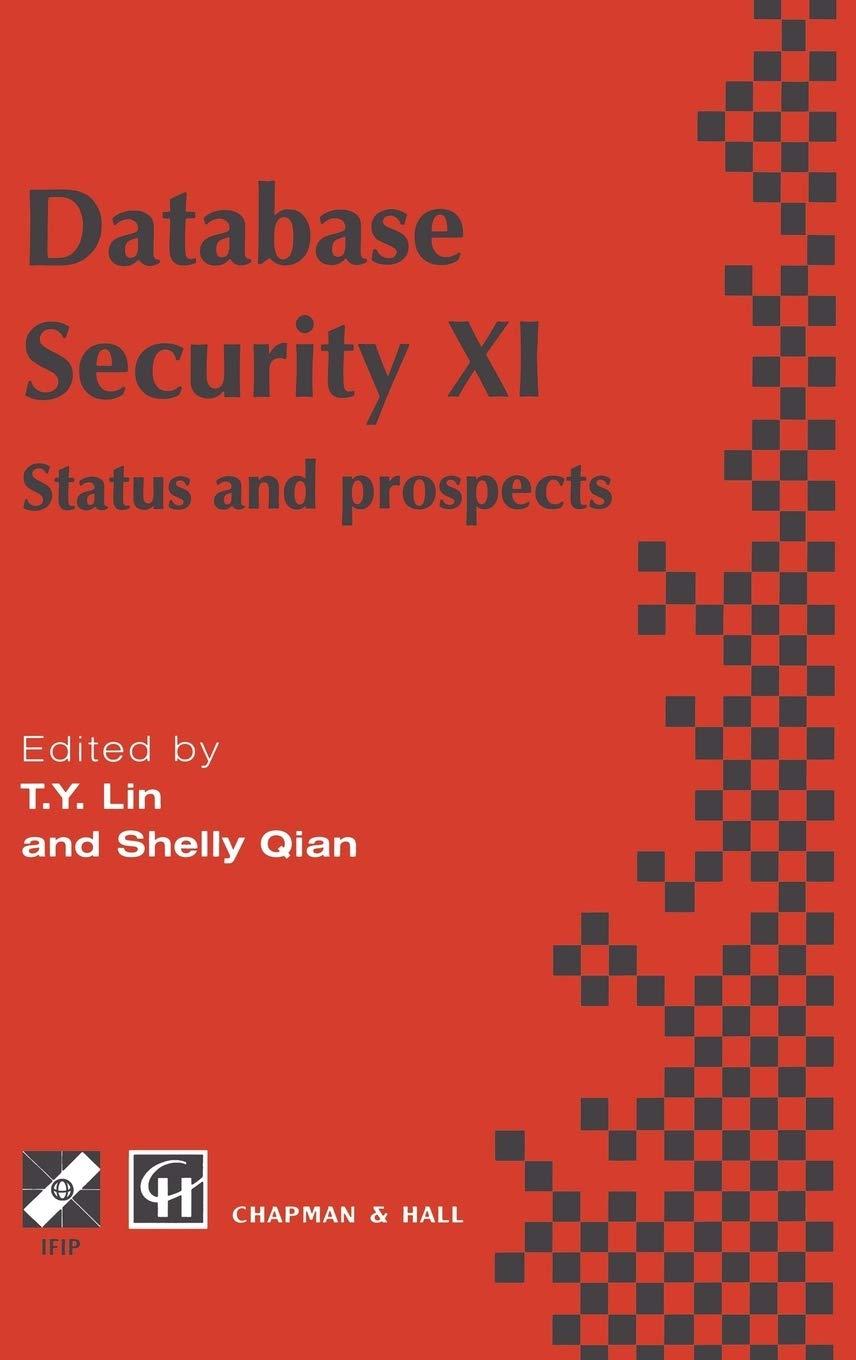Question
C++ *no handwriting codes please* A large manufacturing plant has many identical machines, all of which are subject to failure at random times. Technicians are
C++ *no handwriting codes please*
A large manufacturing plant has many identical machines, all of which are subject to failure at random times. Technicians are hired to patrol and service the machines. Determining the appropriate number of technicians to hire depends on the following considerations:
** Good technicians are expensive but can complete the service faster. We will consider two types of technicians; using fast, experienced, but expensive technicians and using slower, less qualified, but less expensive technicians.
** A technician can work on only one machine at a time, so if we have more machines down than we have technicians some machines may have to wait for repair. This will result in productivity loss to the company (which translates to money lost a cost).
** Too many technicians will ensure that when a machine goes down, it will be serviced immediately however, it may result in excessive idle time for the many technicians then were paying people to do nothing.
So, in conclusion, this is an optimization problem. We must decide how many technicians to hire and which type to hire (fast or slow). We want to hire the number and type of technicians that MINIMIZES our cost.
The following information will be known:
F=failure rate of machines R=number of technicians hired
T=traffic intensity = F/U N=total number of machines
W=hourly wage of technician ($/hr) L=cost of inoperative machines ($/hr)
U=repair rate of technicians (note that this is lower for faster technicians)
The basic problem is to minimize total cost. The total cost includes the cost of the technicians plus the cost of having machines down:
Cost=(#techs)(wage)+(#machines down)(cost of machine being down)
Using our notation above, we have:
COST = R*W + Md*L
Md is the average number of machines down at any one time. This depends on how many technicians are working. We must find Md to figure out the cost. Unfortunately, finding Md is the most difficult part! We must calculate the probability of different numbers of machines being down and then we can find the average number of machines down.
To find Md:
Let n=the number of machines down. Queuing theory lets us calculate probability using:
P(n+1)=probability that n+1 machines are down
P(n)=probability that n machines are down.
If n
If R<=n<=N then P(n+1)=T*((N-n)/R)*P(n)
For example, if N=50 (we have 50 machines in the shop), R=5 (we have 5 technicians), and T=.05 (traffic intensity), then using the equations above, we get:
P(1)=T*N*P(0) =2.5P(0) and this is the probability that one machine is down
P(2)=.5*T*(N-1)*P(1) =1.225P(1) =3.063P(0) prob that two machines are down
P(3)=.33*T*(N-2)*P(2) =.792P(2) =.970P(1) =2.43P(0) prob that 3 machines are down
.
.
.
P(6)=T*(N-5)/R*P(5) =.450P(5) =.298P(0) prob that 6 machines are down
Ok, so we need to find P(0), then we can use this to find the rest.
Set P(0)=1(there is statistical theory behind this but its beyond the scope of this class)
Calculate the probabilities for all n, up to N, usingP(0)=1(do what we just did above but P(0) will be equal to 1).
Sum all the probabilities up to N.
Multiply each n*P(n)
Sum all n*P(n)
Finally, Md=(sum of n*P(n))/(sum of P(n)),that is Md=(step e)/(step c)
Now that we know Md, we just calculate the cost using the formula for total cost on the first page.
DETAILS: We will consider two types of technicians (fast and slow) and two types of machines (good and poor). This means we have four possible combinations:
fast technician and good machines
fast technician and poor machines
slow technician and good machines
slow technician and poor machines
This means that for each case above, we are trying to find R the number of technicians we should hire.
Heres a quick algorithm for solving the problem:
The user will input the following data:
Number of machines, cost of inoperable machines, maximum number of technicians,
Failure rate for good machine, failure rate for poor machine, hourly wage for fast tech,
Hourly wage for slow tech, repair rate for fast tech, repair rate for slow tech
Do Case 1 (ie. fast workers and good machines)
Calculate T
For each value of R, up to the maximum
Calculate Md (using procedure outlined above)
Calculate Total Cost using formula above
Find the optimum number of technicians to hire for that case (ie.This will be the minimum cost).
Do Case 2 (fast workers, poor machines)
You must do steps 2-5 all over again using the appropriate numbers for fast workers and poor machines)
Continue for next two cases.
OUTPUT REQUIRED: Your output should look like this:
BASIC PARAMETERS:
Downtime loss per machine = $XXX.XX
Total number of machines=XXX
Types of technicians: Fast Slow
Corresponding wages $XX.XX/hr $XX.XX/hr
And repair rates .XXX/hr .XXX/hr
Types of machines: Good Poor
Fail Rates .XXX/hr .XXX/hr
Type of Type of Traffic Optimum Total
Worker machine intensity number Cost
Fast good X.XXX XX $XXXX.XX
Fast poor X.XXX XX $XXXX.XX
Slow good X.XXX XX $XXXX.XX
Slow poor X.XXX XX $XXXX.XX
Step by Step Solution
There are 3 Steps involved in it
Step: 1

Get Instant Access to Expert-Tailored Solutions
See step-by-step solutions with expert insights and AI powered tools for academic success
Step: 2

Step: 3

Ace Your Homework with AI
Get the answers you need in no time with our AI-driven, step-by-step assistance
Get Started


